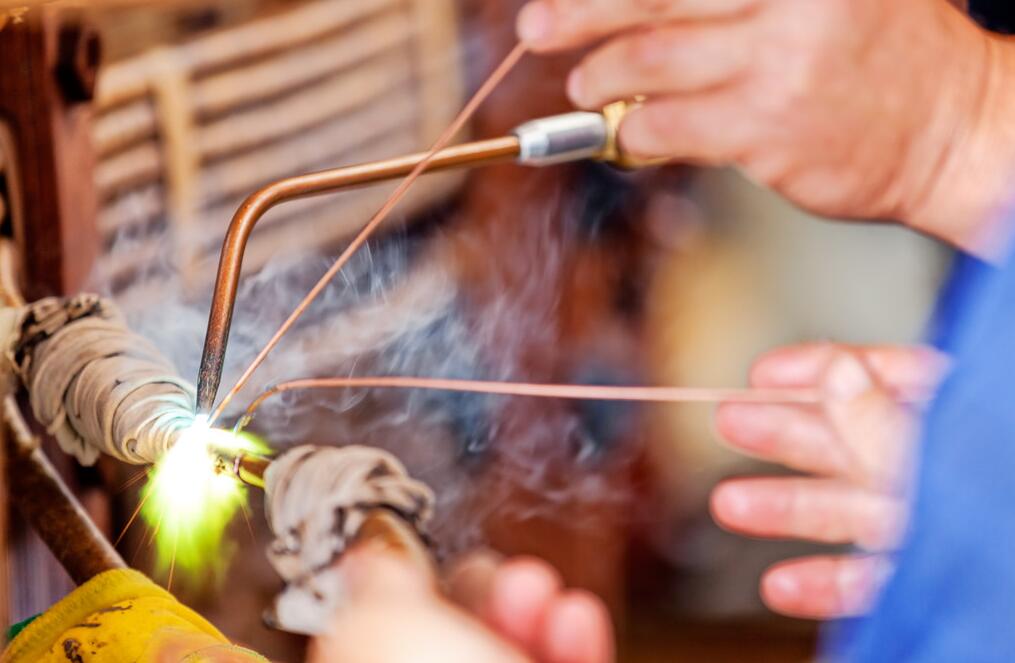Detailed Explanation of Welding Method
 Mar 31, 2023|
Mar 31, 2023| View:225
View:2251. Fusion welding
1. Gas welding: The use of oxyacetylene or other gas flames to heat the base metal and filler metal to achieve welding purposes. The flame temperature is about 3000 ℃.
Suitable for thinner workpieces, small diameter pipes, non ferrous cast iron, brazing.
2. Manual arc welding: A manually operated welding method that uses an electric arc as a heat source to melt the electrode and base metal to form a weld. The arc temperature
is around 6000-8000 ℃. Suitable for welding ferrous metals and some non ferrous metals, with a wide range of applications, especially for short welds and irregular welds.
3. Submerged arc welding: (sub automatic and semi braking) The arc burns under the flux zone, using granular flux as a covering layer for the metal weld pool, isolating air from
entering the weld pool. The welding wire is continuously fed into the arc zone by a wire feeding mechanism, and the welding direction and moving speed of the arc are completed
manually or mechanically. Suitable for welding straight and regular welds of carbon steel, low alloy steel, stainless steel, copper, and other medium and thick plate materials.
4. Gas arc welding: (gas shielded welding) Arc welding using shielding gas to protect the welding area. The protective gas acts as a protective layer for the metal molten pool to
isolate air. The gases used include inert gas, reducing gas, and oxidizing gas, which are suitable for the welding of non ferrous metals such as carbon steel, alloy steel, copper,
aluminum, and their alloys. Oxidizing gases are suitable for alloys of carbon and alloy steels.
5. Ion arc welding: An ultra-high temperature heat source generated by ionizing gas in the arc and then undergoing thermal, mechanical, and magnetic shrinkage effects for welding,
with a temperature of around 20000℃.
2. Pressure welding
1. Friction welding: Using the heat energy generated by the mutual friction between weldments and the rotation of the contact end faces to apply a certain pressure to form a welded joint.
Suitable for welding aluminum, copper, steel, and dissimilar metal materials.
2. Resistance welding: Using the resistance heat generated by current flowing through the weldment, heat the weldment (or base metal) to a plastic state or partial melting state, and then
apply pressure to connect the weldment together. Suitable for welding thin plates, pipes, and bars.
3. Brazing
1. Soldering: The use of an electric soldering iron or flame to heat a soldering iron. Heat the base metal locally and melt the filler metal into the gap to achieve the purpose of connection.
Suitable for solder with a melting point of 300 ℃. Generally used for welding of wires, circuit boards, and components.
2. Flame brazing: Using a gas flame as a heating source to heat the base metal and melt the filler metal into the gap to achieve the connection purpose. Suitable for welding parts with
generally small dimensions such as stainless steel, cemented carbide, and nonferrous metals.
Among them, welding precautions:
1. During welding, due to the frequent replacement of welding rods and adjustment of welding current by welders, direct contact with electrodes and plates is required during operation,
and the welding power supply is usually 220V/380V. When there is a fault in the electrical safety protection device, unqualified labor protection equipment, or the operator operates in
violation of regulations, electric shock accidents may occur. If welding is carried out in metal containers, pipelines, or wet places, the risk of electric shock is greater.
2. Due to the occurrence of electric arcs or open flames during welding, it is extremely easy to cause fires when working in places with flammable materials. Especially in flammable and
explosive device areas (including pits, trenches, grooves, etc.), there is a greater risk of welding on containers, towers, tanks, and pipelines that have stored flammable and explosive media.
Due to the occurrence of electric arc and metal slag during welding, if the welder does not wear protective work clothes, gloves, and leather shoes for electric welding during welding,
especially when welding at heights, due to the spatter of electric welding sparks, if protective isolation measures are not taken, it is easy to cause skin burns to the welder himself or the
construction personnel below the working surface.
3. Due to the strong visible light and a large amount of invisible ultraviolet rays generated during welding, it has a strong stimulating and damaging effect on the human eye. Long time direct
irradiation can cause eye pain, photophobia, tears, and wind fear, which can easily lead to inflammation of the conjunctiva and cornea of the eye (commonly known as electro-optic ophthalmia).







